The best juicer ensures you can turn fruit and vegetables into a refreshing drink in minutes at home - no longer will you need to head out to the local smoothie bar or grocery store to get your juice fix. The best juicer is also a great way to introduce more nutrients in your diet as they can be used with a wide variety of fresh produce including berries, citrus, and tropical fruits as well as tougher, fibrous vegetables and even leafy greens.
There are two styles of juicer to choose from; centrifugal juicers, which are the most affordable design on the market, and cold press juicers. Centrifugal juicers use rotating blades to extract juice from fresh produce, whereas cold press juicers, which are often dubbed a slow juicer or a masticating juicer, grind and chew the fruit, passing the liquid through a strainer and separating the pulp to ensure the juice is as smooth as possible.
A cold press juicer is more expensive than a centrifugal juicer but they preserve more nutrients than a centrifugal juicer, as well as extracting larger quantities of juice. You can find out in-depth what is a cold press juicer is and how to use a cold press juicer in our article.
One of the best juicers can also help introduce more fruit and vegetables into your diet, particularly if you want to increase the varieties you consume, but there have been some health implications raised over their use. You can find out just how healthy is using a juicer by reading our feature.
Prefer smoothies to juice? Then consider one of the best blenders instead, as they pulverize fresh produce into a silky, refreshing drink, rather than extract the juice. Find out how the two appliances differ by reading juicers vs blenders.
Black Friday and Cyber Monday are just weeks away, and this is the time when we see the best discounts on a wide range of juicers. However, while hanging on for the day itself can net you the biggest savings, given the global supply chain issues right now, if you want to ensure your juice arrives in time for the festive period, we’d recommend snapping up a deal sooner rather than later.
There’s a wide range of juicers on the market from brands such as Nutribullet and Ninja, as well as Smeg and Breville, which also have a range of coffee makers and espresso machines too. You should also consider Kuvings and Nama, as while these may not be familiar brands, they specialize in manufacturing juicers.
We’ve put an array of models to the test to discover which is the best juicer you can buy right now.
The best juicer of 2021 we've tested
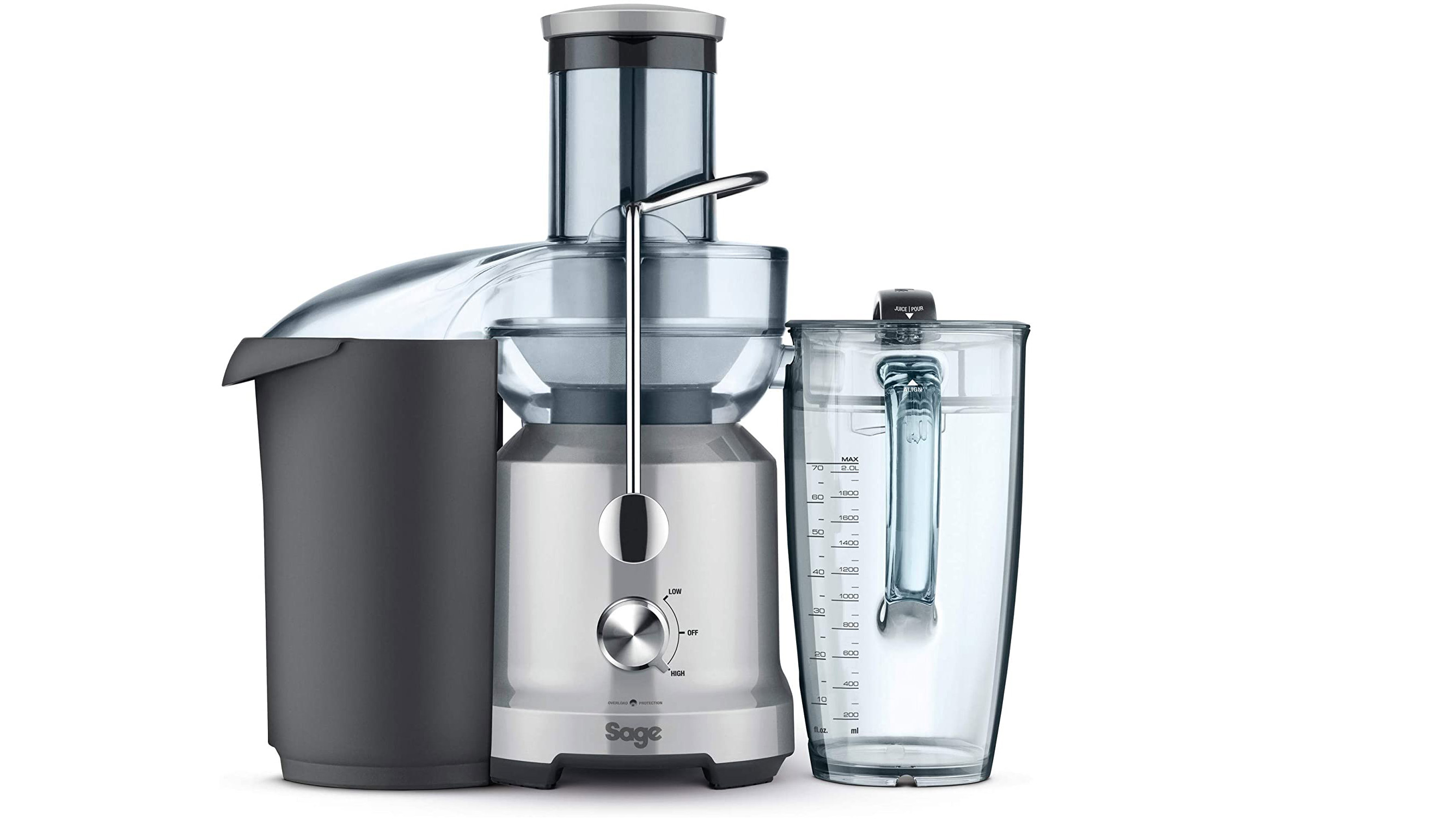
If you’re looking for the best juicer you can buy, Breville's the Juice Fountain Cold hit the sweet spot when it comes to juice yields, simplicity and price. With a 70oz/ 2L lidded jug and 3.6 qt/ 3.4L pulp container, this juicer can make large quantities of juice in one go, and we were impressed at just how clear the juice produced was, and the fact there was no pulp included in the juice either.
Known as the Sage the Nutri Juicer Cold in the UK, this is a centrifugal juicer but it features ‘Cold Spin Technology’ which the brand claims will ensure the juicer stays cool, despite its high spin speed to avoid any heat damage to vitamins and minerals during the juicing process.
If you’re a fan of kale shots, then this isn’t the juicer for you, as it struggled to extract much juice from leafy greens, and we also found that while juices were smooth, they had a thick layer of foam. However, considering its mid-range price tag, we think is definitely a juicer worth considering.
Read our full review: Breville the Juice Fountain Cold
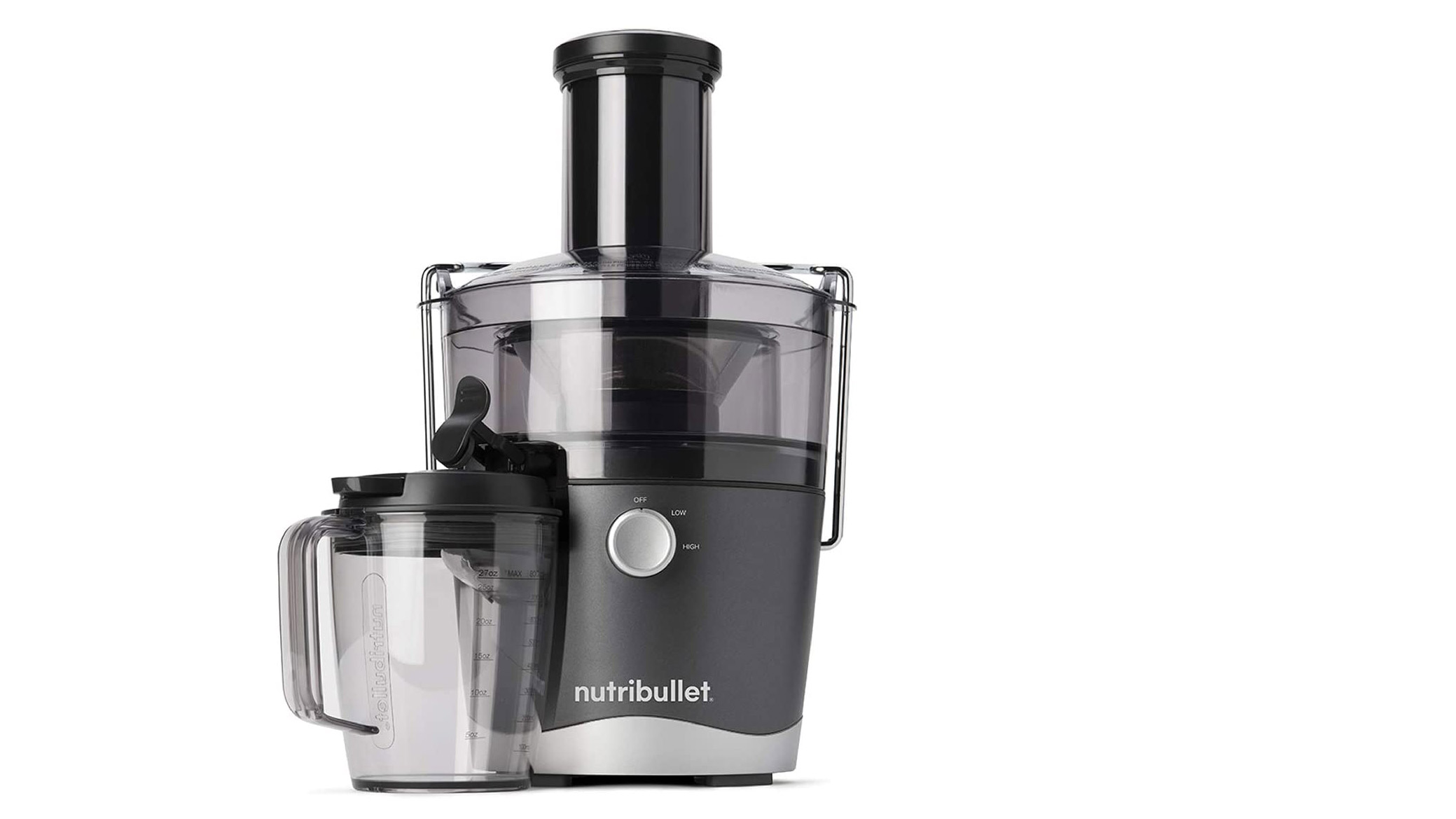
This is a great entry-level juicer for those on a budget. With two-speed settings, it’s easy to use, and the dishwasher-safe components meaning cleaning it is a breeze too.
It’s effective at producing plenty of juice from fruit and vegetables, but in our tests, the juices we created weren’t completely smooth and had a large layer of froth on top too. The Nutribullet Juicer also struggled to produce much juice from leafy green vegetables, such as kale, although this is what we’d expect from a centrifugal juicer.
A compact and neat juicer, the Nutribullet has a wide feed chute, so you don’t have to waste time chopping fresh produce, and the pitcher comes with a lid to make storing the juice easy. There's also a recipe booklet, which offers plenty of inspiration for those new to juicing. If you’re on a budget, this is a juicer worth considering.
Read our full review: Nutribullet Juicer
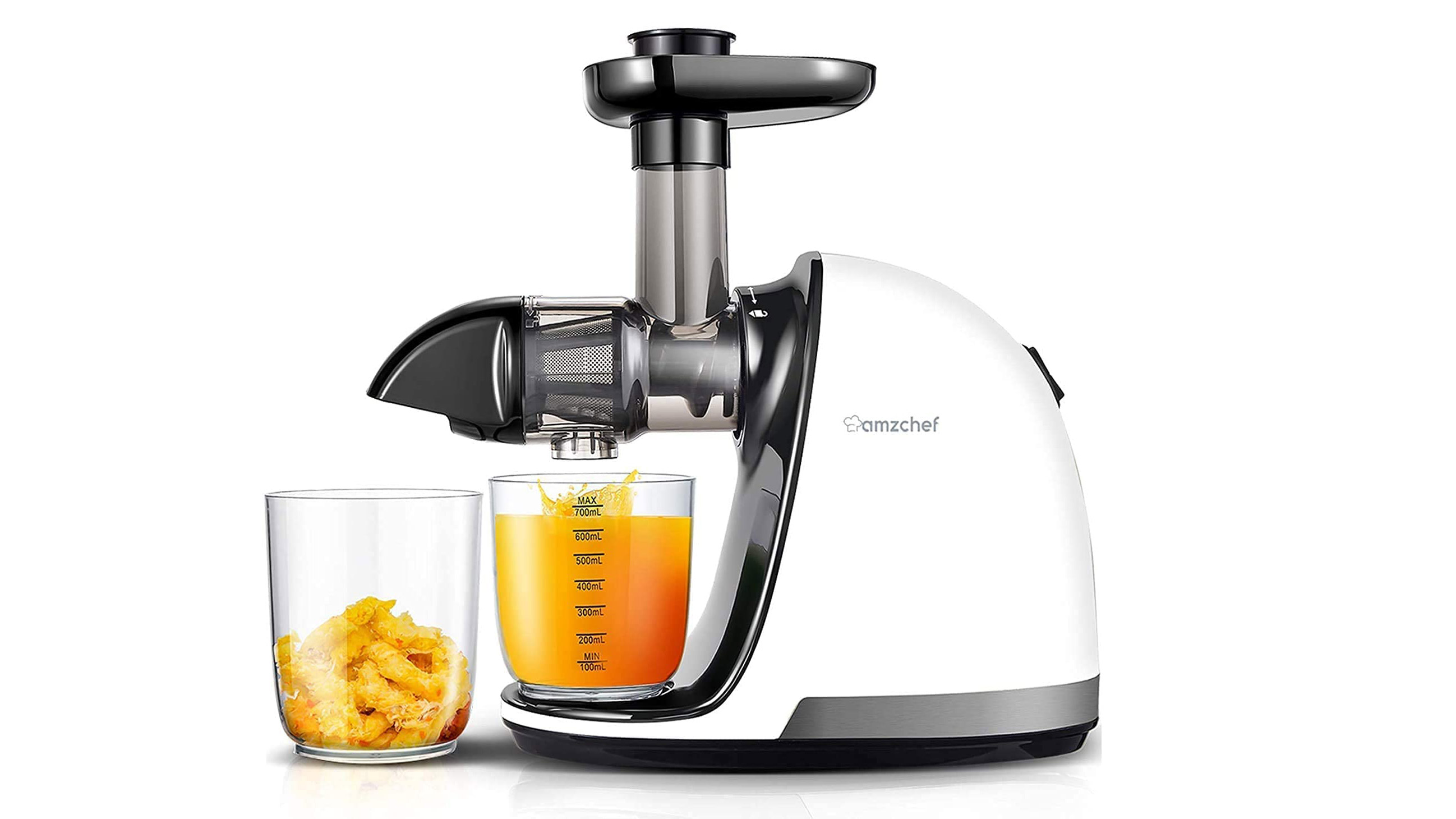
With a price tag of under $100 / £100, this slow juicer represents excellent value for money and ideal for those on a budget but still want high juice yields or to make refreshing drinks from leafy greens.
On test we found it easy to assemble and simple to use. The juice yields were slightly below what we’ve seen from more premium slow juicers but exceeded the results from its nearest competitor in terms of price, the Ninja Cold Press Juicer. The components are dishwasher safe, which makes for easy cleaning, too
However, the feed chute is smaller than other juicers we’ve tested, which means you will have to spend time chopping up fruit and vegetables before juicing them and the instruction manual wasn’t as detailed as we’d have hoped.
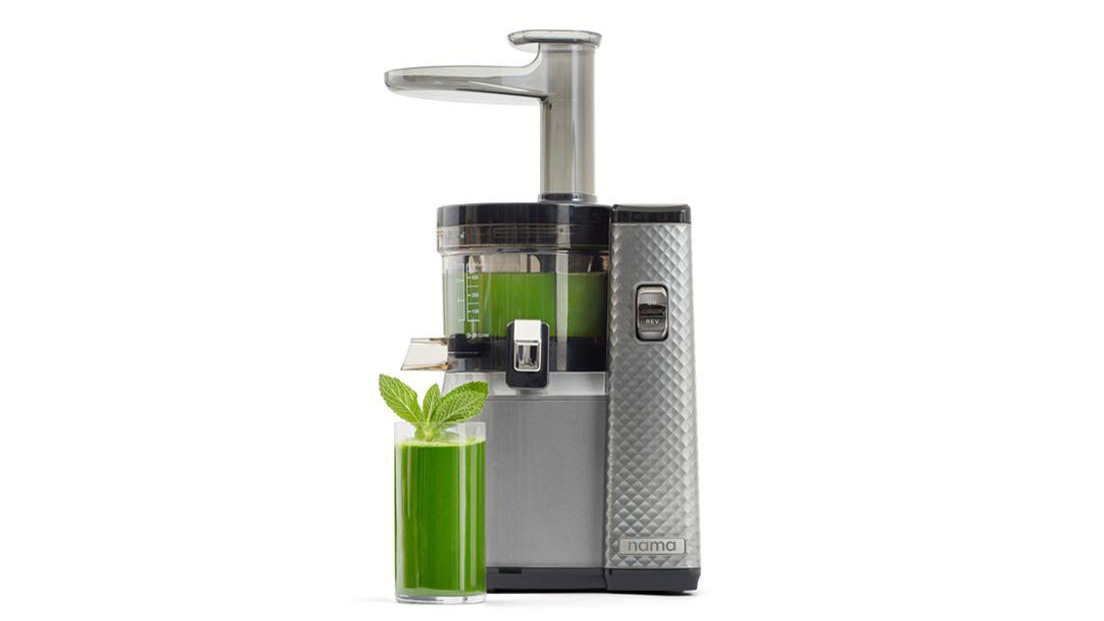
If you’re looking for the best juicer for leafy greens, the Nama 5800 will be right up your street. We were extremely impressed with this juicer, which is neat and compact, and achieved some of the highest juice yields (the amount of juice compared to the original weight of fruit and vegetables) we’ve ever seen, even when juicing Kale. However, it's also one of the most expensive on the market too.
It’s simple to use and comes with three interchangeable strainers, which allow you to make smoothies and sorbet as well as refreshing juices. We found the juice it extracted, both from soft fruits and harder, fibrous fresh produce, was clear, smooth and froth-free.
The feed chute is not as wide as some juicers we've tested, so you will need to chop larger fruits up before you begin juicing, but this really is a minor gripe on what is the best juicer we’ve tested to date.
Read our full review: Nama Vitality 5800
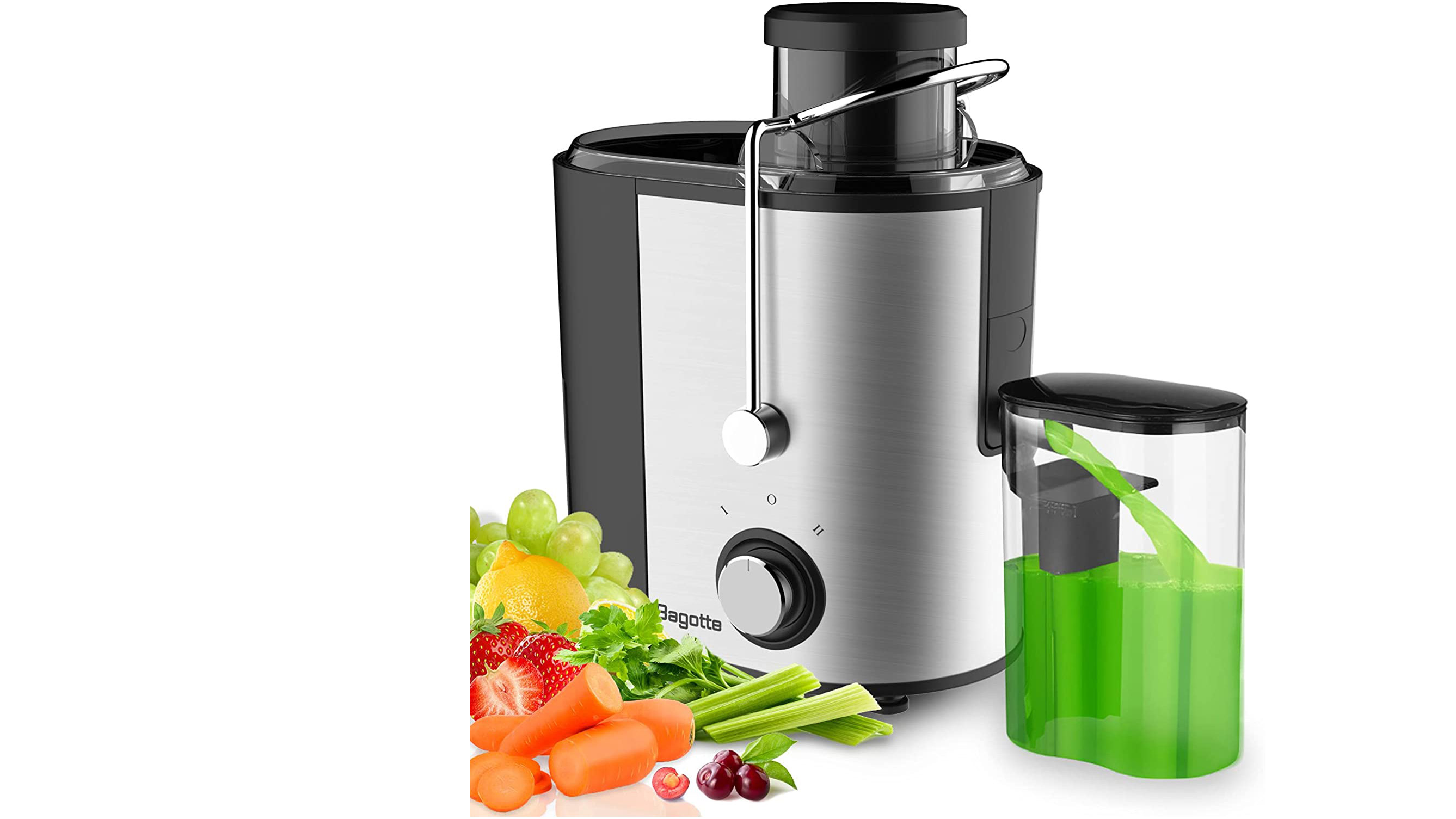
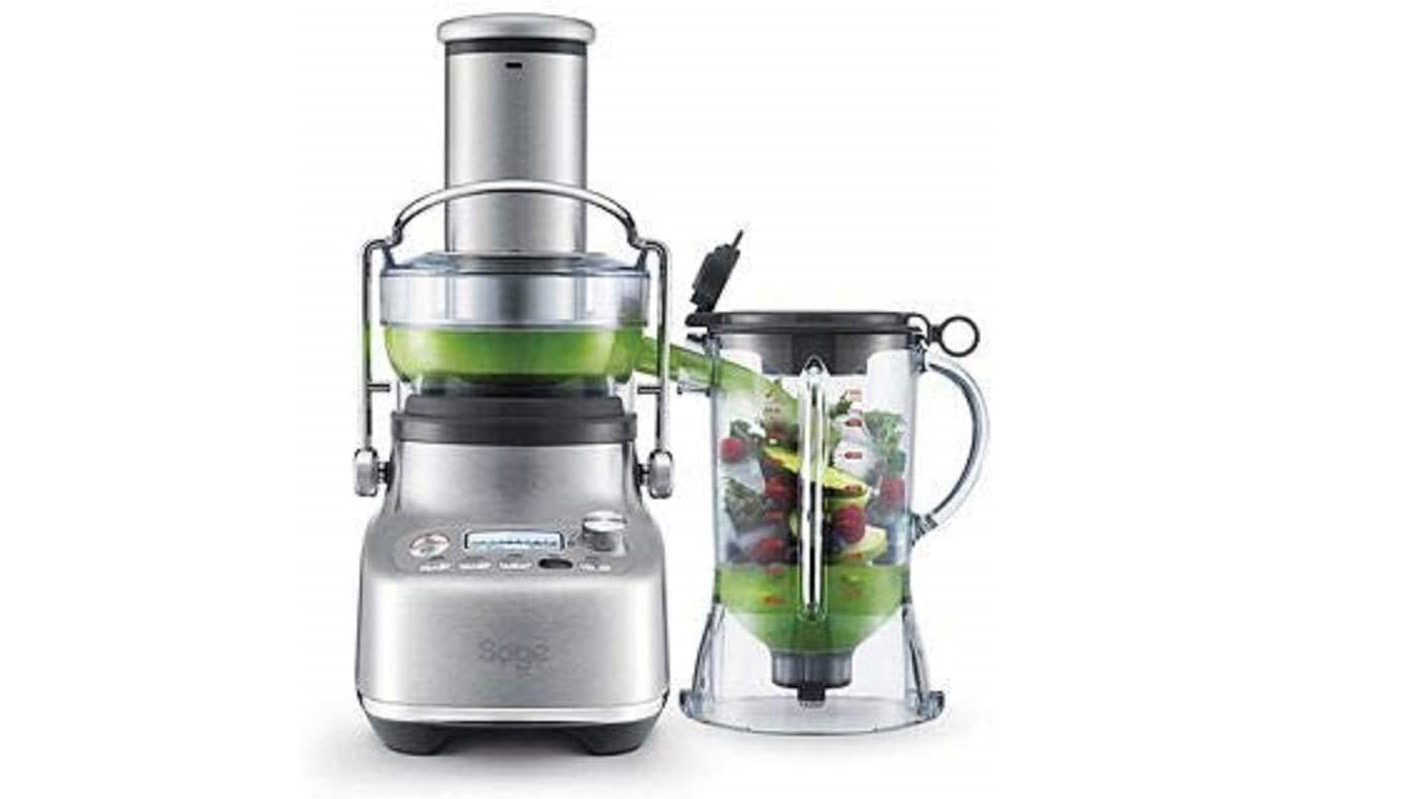
Unlike the other juicers in our round-up, the Sage the 3X Bluicer Pro, which is known as the Breville the 3X Bluicer Pro is the US, doubles up as a blender.
In our tests, it came up top in terms of speed, juicing an apple in just 10 seconds, making it one of the fastest and most efficient juicers we've tested. It also has an informative LED control panel display that walks you through the controls and lets you adjust the speed - a feature we think is lacking on standard juicer appliances.
However, in use this is the noisest juicer we've tested and is bulky so requires a lot of storage space. .
Read our full Sage 3X Bluicer Pro review
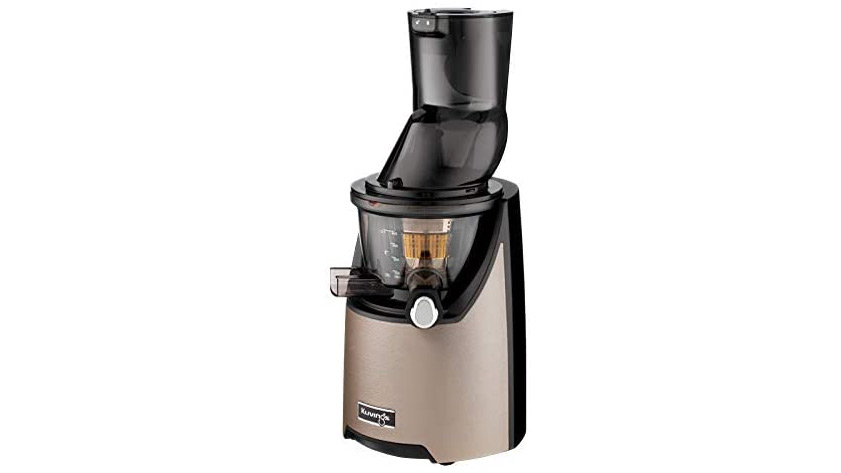
If you're looking for an appliance that can prepare more than just refreshing fruit and vegetable drinks, the Kuvings Evolution 820 Cold Press Juicer is worth considering.
It comes with two strainers, but an additional Homogenizer that allows you to make nut butters, sauces, purees and fresh 'ice cream' from frozen fruits, is also available for the juicer along with a smoothie strainer.
The Kuvings Cold Press Juicer doesn’t come cheap, but with its relatively heavy base and stylish body you can tell you’re paying for a durable, serious piece of kit. It impressed us by producing smooth, clear froth-free juice from an array of fruit and vegetables. It's also one of the quietest we've tested too. However, it is a bulky machine
Read our full Kuvings EVO820 Evolution Cold Press Juicer review
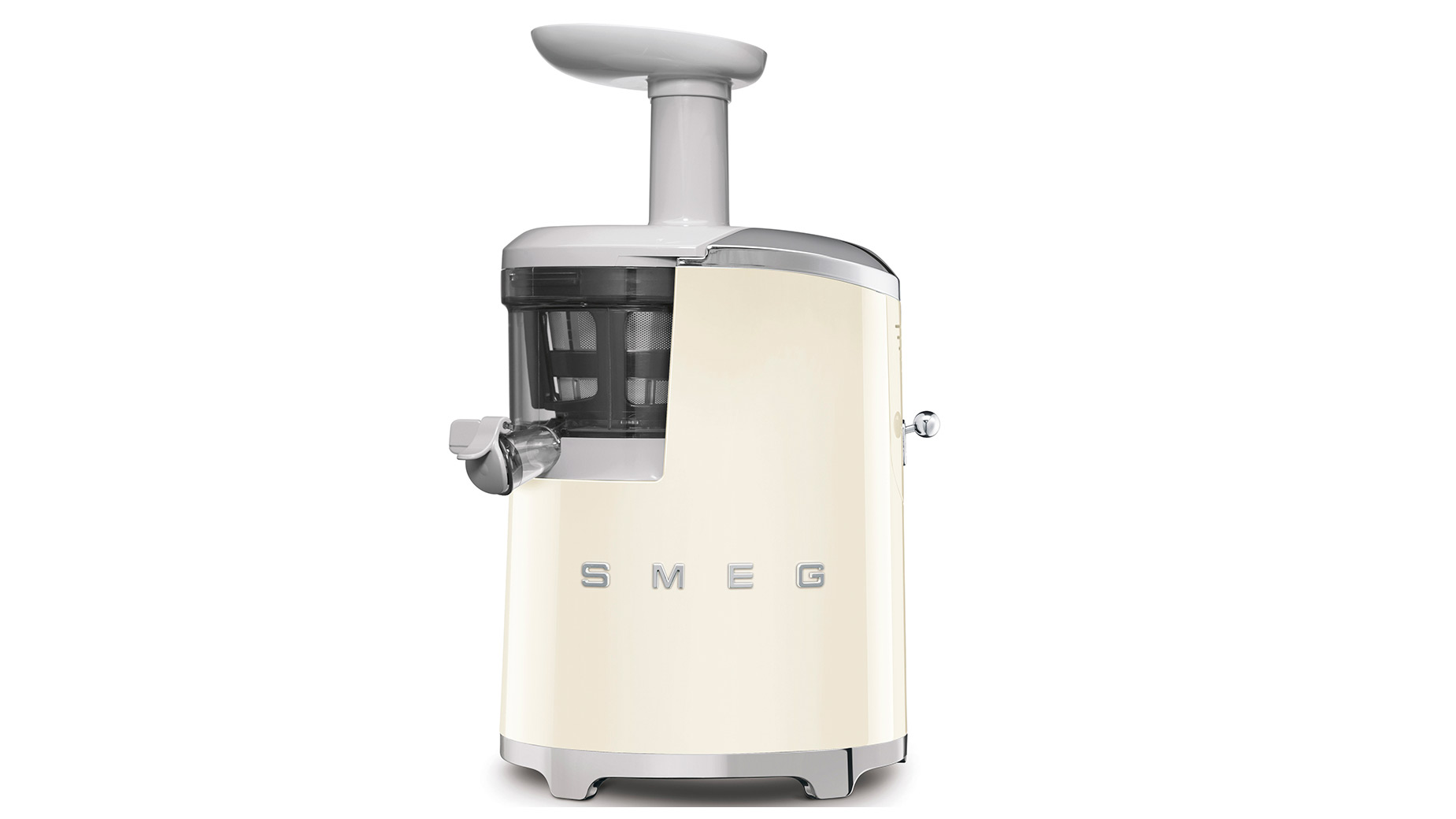
The attractive retro body on the Smeg SJF01 Slow Juicer certainly looks good on the worktop, but its basic functions are a little less luxurious. Designed to match Smeg’s iconic range of 1950s small and large appliances, this juicer comes with minimal accessories and lacks a froth separator.
In our tests, we found it was simple to use and on the whole produced clear, smooth juice from an array of fruit and vegetables. We were also impressed with the juice density regulation lever, which allows the thickness of the juice to be adjusted to your tastes.
While it may not be the most high-tech juicer on the market, it you want smooth juice and good looks from an appliance, it fits the bill.
Read our full Smeg SJF01 Slow Juicer review
How we test juicers
To find the best juicers we’ve spent hours in the kitchen putting the top models to the test to make a green juice from broccoli, celery, pears and ginger, while also juicing carrots, oranges and apples. As well as evaluating how smooth the drinks are and how fast they’re dispensed, we’re also looking for whether bitterness from the pith and pulp has tainted the taste of the juice, how much foam has been created in the drink and if there’s any remaining fresh produce in the appliance that hasn’t been juiced.
For each model we rate how loud they are, how durable and easy to clean the body and parts are, if the chute is wide enough for whole fruits and vegetables or whether they need to be chopped before juicing, and if it splashes and drips during and after use.
What to consider when buying a juicer
As we’ve already mentioned there are two different types of juicer to choose from if you’re looking to invest in an appliance that can extract liquid from fruit and vegetables.
A centrifugal juicer uses a flat blade and spinning strainer to create fresh juice, and works best on firmer fruits and veggies. They're faster and more affordable than cold press juicers but they're noisier and create more heat which can break down the nutrients in the fruit quicker than slow juicers.
A slow juicer, as the name suggests, takes its time breaking down fruit and vegetables to ensure as many nutrients as possible are retained and every drop of juice is extracted. They’re more expensive than a centrifugal juicer but this can be cost-effective in the long run as you’ll get a higher yield of juice.
Many juicers come with a range of different sized-strainers, which means you can control how much pulp, if any, is retained in the juice, and for those that dislike froth on freshly squeezed juice, look for models that include a froth separator. Some juicers even offer additional attachments so you can create nut butters, fresh pasta, and even grind coffee as well as extract juice.
Also, consider the size of the juicer and where you’re going to keep it, and any accessories it comes with, as well as how time-consuming it is to clean.
Which type of juicer is best?
As we've already mentioned, there are two styles of juicer on the market to choose from; centrifugal juicers and cold press juicers. This may leave you wondering which type of juicer is best.
Centrifugal juicers are more affordable than cold press juicers and then are quicker at extracting juicing too. However, the blades they use to extract juice from fruit create heart, which can destroy the nutrients and minerals in the fruity liquid.
Cold press juicers do a better job of preserving the nutrients in the fruit juice as they grind and chew the fruit to extract the juice rather than blades that generate heat. However, this means the juicing process is slower than when using a centrifugal juicer, and its more expensive too.
You can find out in-depth how the two designs differ by reading Centrifugal juicers vs cold press juicers.
Juicers vs blenders
Juicers have been designed to extract the liquid from fresh produce. As we’ve covered above, there are a few different types of juicers and some use sharp blades to break down the fruits and veggies, whereas others slowly press the ingredients to release the liquid. Once the juice has been created, you’ll have the leftover parts of your produce.
Blenders work differently because rather than extracting juices, they break down the entire contents of the blending jug to create a smooth mixture and don’t leave anything behind. For a full round-up of the pros and cons of both juicers and blenders, head to our feature on Juicers vs blenders: what’s the difference?
How to clean a juicer
Cleaning a juicer isn’t always easy, especially as there are lots of small crevices where fruit or veggies can get stuck and start to build-up. Staying on top of the cleanliness of your juicer will help keep your juice tasting as fresh as possible while ensuring the machine is hygienic too.
You'll need to clean all the removable parts off the machine in warm water and dish soap, scrubbing them with a cloth or brush where necessary as well using a spoon or a spatula to remove the pulp from the machine. Discover in-depth how to clean a juicer in our article.
from TechRadar - All the latest technology news https://ift.tt/327lPo1
Aucun commentaire: